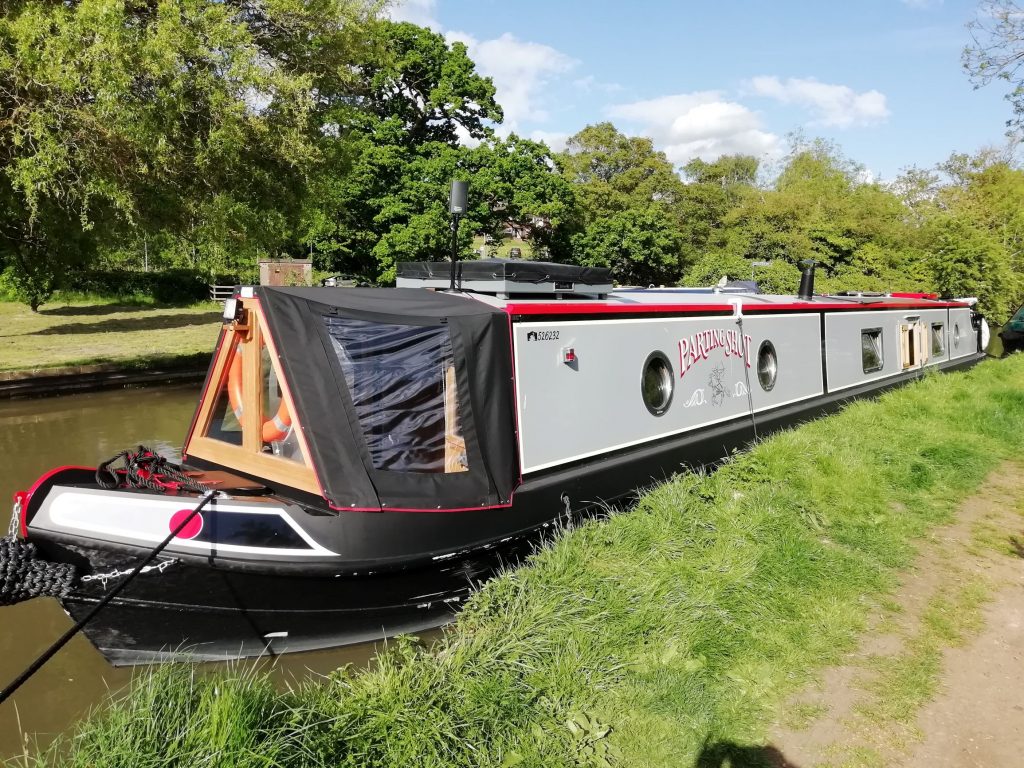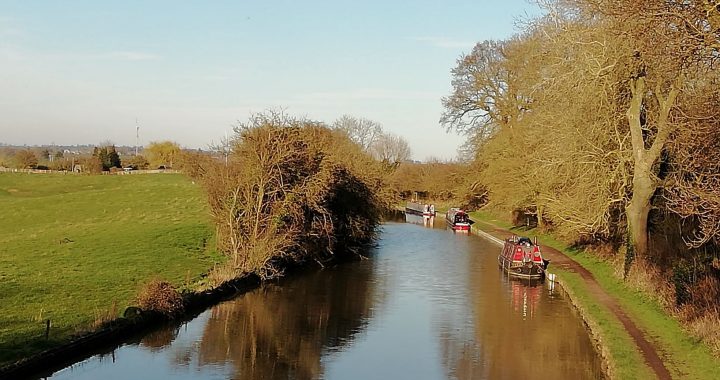
Warranty Wind-up
“Parting Shot” went into the water on 13th March 2019, so last month saw the end of the twelve month warranty period – not generous for a sizeable investment, particularly one so heavily imbued with idiosyncrasy. I thought people might like an update on where we stand at this point.
We’ve gone from trying to address large items that were simply not finished or hadn’t even been delivered and fitted, to reporting issues with sealant on the windows and minor leaks in the skin fittings etc. It has taken time and patience arranging and re-arranging snagging trips but by and large all the things that we have raised that are going to be fixed have been fixed, with just two notable exceptions.
Looking at the final version of the snagging list, some things were questions we raised or things we didn’t fully understand. A couple of the other items we just wrote off as being too much trouble, for too little gain, to force the issue. Almost everything else had been addressed, one way or another, by the end of 2019. Since then, although we have been on board a fair bit for various reasons and despite having endured an incredibly wet and windy winter, we haven’t found any new issues.
For fans of statistics:
| Queries & Clarifications | 12 |
| Concessions Granted | 2 |
| Fixes & Resolutions | 56 |
| Issues Outstanding | 2 |
| Snagging List Total | 72 |
In general I have found that, when you get to the end of a project like this, the issues not yet put to bed have a couple of characteristics in common:
o They will be significant but just tolerable, although for how long it is difficult to quantify objectively.
o Their solutions will be expensive and difficult to implement, with no absolute certainty of success.
These factors also make it likely that they will have been one of the first issues reported. The latter is true of our first problem, although not the second.
Issue 1: Some Like It Hot
Essentially from Day One we have complained that the central heating just isn’t working properly. Given enough time it heats up and heats the boat but it takes literally hours to get there. Since this has been a running issue from the start it is still a warranty item and we have to acknowledge that neither Aintree nor the heater suppliers, Eberspaecher, have ever tried to dodge the question or pretend there is nothing wrong. Each cycle in their working to address it, however, is punctuated with very long pauses while they think again and come up with a new approach to investigate it or with a different fix.
First, in April, Aintree changed the pipe layout, quite an invasive exercise so it was good that we weren’t living on board then. In May they came to meet us at Rugeley and made more changes to the pipework in the saloon. Over the next few months Aintree were in discussion with Eberspaecher. We did wonder if this was true but when I spoke to them myself they confirmed they had had several conversations with Aintree about how to proceed. In September, Eberspaecher sent two of their own representatives to meet us at Nantwich. They were very quick to acknowledge that it wasn’t doing the job but they had to get the original and current pipe layouts from Aintree, which they received in October.
Based on that, Eberspaecher eventually recommended another pipe change, which Aintree carried out in November. Since there was no improvement Eberspaecher wanted to engage their own narrowboat specialist, near Northampton, to investigate further. Of course, Christmas intervened so it was 9th January 2020 before they and Eberspaecher met us at the boat. Having swapped the control unit on the heater from a 4 kW to a 5 kW unit they fired it up and were forced to acknowledge it still wasn’t getting hot enough, fast enough.
Along the way we had been through the self-doubt and questioning of our own expectations, various discussions about the radiators themselves and a number of conversations about the various heater sizes and the need to work them hard:
Appropriate Expectations:
In the end it was clear that it wasn’t just us, the system was not meeting anyone’s expectations and needed to be sorted.
Radiators Deployed:
We had specified the radiators, just because we were told to say what we would like. Nobody had flagged our choice as being a problem. It turned out that neither Aintree nor Eberspaecher were familiar with this style, so they were always a bit of a question mark in the back of our minds. However, Eberspaecher’s narrowboat specialists knew of them and didn’t believe they were a problem.
Correct Sizing:
All the parties repeated several times that 4 Kw should be enough for a boat and system of our size and that it was important not to over-specify the heater. Too powerful and it would not work hard enough and so would have a propensity to coke-up and ‘short-cycle’, apparently a very bad thing. However, the tests run with a 5 kW control unit seemed to demonstrate that 4 kW or even 5 kW was not enough.
The conclusion reached was that the whole heater should be changed from the current model to an 8 kW version. Something all parties went away to discuss with their various headquarters and accounts departments.
As it happens, later in January and while we were out on our one trip over the winter, still waiting to hear what was happening next, I bumped into Tim, who used to service the heater on our old boat. I mentioned what was happening and he made a casual comment about a couple of factors that he felt “boat builders generally don’t understand or at least forget”. This conversation bugged me after that, to the point where, later in February, I asked him to come over and check it out in case we were planning major changes unnecessarily that would just make matters worse. He agreed and turned up with all manner of monitors, meters and measuring gear. He did check out the “usual suspects”, which were actually all OK. However, while we waited for the system to warm up (or not), we did a little arithmetic on the output of all the radiators etc. on the boat. We ended up with a figure of 5.5 kW plus the calorifier, for which we didn’t have a number. I have no expertise in this but to the untrained eye it would seem unlikely that either 4 kW or 5 kW of input would ever be sufficient then. As importantly, the margin between 8 kW and the actual amount required was not so great that we would need to be concerned that it was over-specified.
Having put that nagging doubt to bed we started a more active programme of chasing the parties involved. If you make enough calls and speak to the right people direct, you can eventually cut through the miasma of outdated and false information that people love to create and arrive at a single version of the truth accepted by all. By Friday 13th March (slightly ominous) we had established that:
o Eberspaecher would pay for the kit through a distributor called Espar.
o Their narrowboat specialists, BLS, were ready to do the work.
o Aintree Boats would pay the costs for the work by BLS.
o Espar had the kit ready to despatch to BLS near Northampton.
o Everyone had given and received the necessary authorisation.
All that remained was to agree when the work could be done, for which we ended up making arrangements with BLS direct. The first thing to emerge was that their quote was based on the boat going to their yard. Mohammad could go to the mountain but not with his welding gear, so the mountain must come to Mohammad. Secondly, it was a two day job and we could not stay on the boat while they were working on it or overnight. Finally, the heater was not yet with them from Espar.
Since we wanted to make a trip anyway and allowing enough time for the kit to reach them, we settled on leaving our berth on Sunday 22nd March to ensure we could be with them first thing on Tuesday 24th. We then booked a B&B at The Navigation, just up the road, for Tuesday night, so that we could start back late on Wednesday 25th March. I imagine you all know what was coming next!
The Coronavirus situation was steadily heating up over the next week. On the Friday before we were due to leave all pubs and bars were shut down. Checking up the next morning that meant, sure enough, our B&B booking was off, as all areas of the pub would be closed. In the meantime, although the heater had left Espar early in the week by courier, it had still not arrived at BLS. Their view was that if it wasn’t there when we arrived we could leave the boat with them until it was available and the work was done. After a bit of debate we spoke to John, our local taxi driver, to see if he was still taking bookings. He was, so we decided to go ahead and get him to collect us on Tuesday and bring us back home for the night. We would be fairly isolated on the boat and we would just have to risk the car journey if John was up for it. At the time, of course, nobody knew how things were to change a few days later.
We had a great cruise. Setting out about ten-thirty on Sunday we had fine weather, light breezes and sunshine all the way. Mooring up at Nether Heyford, about half an hour from BLS, on Monday afternoon we had a nice walk with Bracken to go and scope the place out and came back through the village of Nether Heyford, which looks a really nice place. By now, we were already advised to stay away from people so we didn’t explore very much but returned to the boat. There we turned on the TV and heard the news that we were all on strict lockdown for the foreseeable future – awkward!
Given our situation, we had no real choice. We moved up to BLS the next morning, another fine day and with a great view of a barn owl hunting in the field beside us on the way. Arriving there we tied up and called Gary to come down and stand the other side of the slipway to give us instructions. Sure enough the kit was still in limbo and its arrival now seemed even more unlikely. We packed up more luggage than originally planned, closed everything down and waited for John to collect us, leaving the boat on their wharf and the keys on board.
Punctual as ever, John whisked us back to our car at Calcutt Boats in half an hour and we headed back to Long Itchington to join the rest of the nation in staying at home, protecting the NHS and saving lives, while wondering what on earth was going to happen next!
Issue 2: A Lick Of Paint
Whatever else one might find to complain about, the paint job on “Parting Shot” was stunning. Most Aintree owners tend to agree that this is a strong suit and it makes sense, since Jamie Greave who runs the company started with the paint shop as his trade. It is the one thing on which everyone else there defers to him and his eye for the right colour and telling detail is as strong as his technical knowledge. He steered us in the right direction on a couple of areas and we are very glad we listened.
So good does the boat look, especially with the sign-writing added, that we spent the summer listening to any number of unsolicited comments, on the look of the boat in general and the paint finish in particular. It needs to harden for six months or so and then it can be polished. Having moored up for the winter this was one job that didn’t seem temperature dependent and we went to make a start on it a few weeks later. That was when we noticed that there were small bubbles in the paintwork, a handful of them were immediately noticeable but, once spotted, a myriad of tiny pinheads could be identified right across the surface. In fairness, from five feet away you can’t tell that they are there.
Having taken some photos and sent them to Jamie we managed to catch up with him on the phone before Christmas. A reassuring conversation, in a way. He can see there is a problem, which may have a couple of causes and could be a reaction to cold temperatures, which at that time we had had a couple of times. In his experience they may well disappear of their own accord and we should look to see if they are still apparent in the Spring. The reassurance was a commitment, if they persisted, to take the boat into a dry dock and redo the top coat as necessary.
Winter came and went but the pinheads did not. Despite seldom reaching as low as zero degrees all through this dreary, wet winter they continue to be clearly visible. Having taken a few up to date photos we contacted Jamie again as the end of the warranty approached. Another positive discussion, with no arguments or equivocation. He immediately offered to arrange to get the boat into a dry dock convenient to us, at a time when the weather should be more suitable, say June or July, to do the repaint. He would even arrange for Robin Wagg, our sign writer, to come down to recreate his masterpiece on the new paint.
Obviously, as this was mid-March and beyond, Coronavirus intervened here too. The next step was to identify a dry dock, in a convenient place, that had space for a booking at the right time. When the lock-down came the people Jamie would need to contact were no longer around or were too uncertain to want to make new bookings and Aintree Boats themselves closed down a few days in. The ‘essential’ category was probably stretching it and the workforce weren’t in any real position to practice “social distancing” in the yard.
Whatever Next? . . . Who Knows?
Plunged, as we are, into a situation reminiscent of the plot of so many apocalyptic novels and films (“28 Days Later”, “Day of The Triffids”, “Cell” . . . . substitute your own favourite here), who can say what will happen next? Or when? So far, we have the realisation of an overwhelming threat to everyone in the population. This is met by urgent and draconian measures to control the situation by limiting movement and closing for business, in expectation of a healthcare system about to be overwhelmed. This will be by patients with a disease that is communicated instantly and inevitably by its victims who, until it is too late to be of use in preventing the continuing tide of infection, lack any symptoms or diagnostic markers that can be seen and for whom no actual curative treatment is possible. So far, we have followed chapter one of these stories pretty closely so we have to hope that we will not continue along that plotline to the ensuing total breakdown of our social order, alongside the transformation of the population into a mass of crazed zombies / vampires / tripodal vegetables etc. Or perhaps, looking at the behaviour of the baying press pack, it was already too late for that before we started?
Assuming that the tide is stemmed and there is an eventual return to something approaching what was once thought of as normal, it remains to be seen whether the commitments made will still be honoured, or indeed if the various parties will all still be there to honour them. As for when that might be, it is anyone’s guess. Watch this space!


